
A British Soldier's
Christmas in Victorian Times
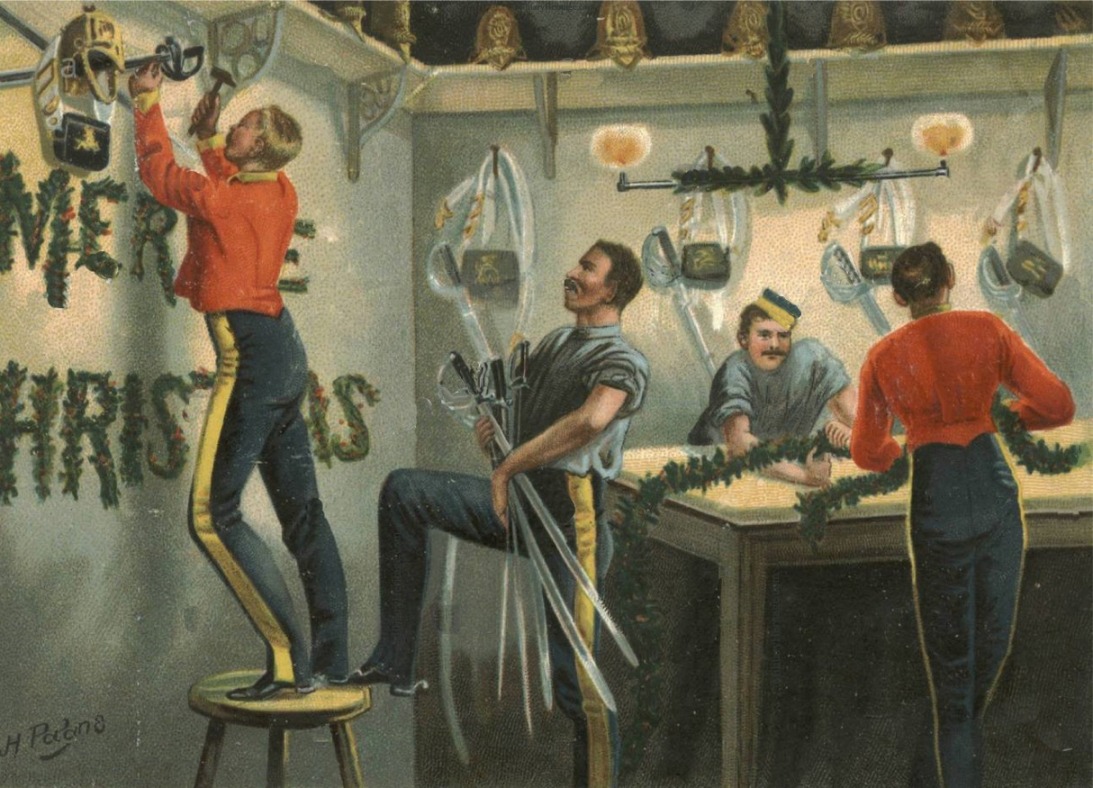
Christmas decorating in a British Cavalry
barracks in 1887. (swords for your decorations)
Thomas Faughnan,
a soldier in the 17th Regment of Foot, recounted the expectations of a bountiful Christmas party
in 1850 sponsored
by his company's Captain, who had just returned with his bride:
"On his arrival, he
intimated that he would entertain his company to a Christmas dinner, and a barrel of ale
to wash it down.
This glad tidings of great joy
spread like wild-fire through the company, which soon after assembled in one of the
largest barrack-rooms to deliberate on the preparations compatible with the forthcoming
happy event.
The meeting was presided over by the colour-sergeant of the company,
supported by the other non-commissioned officers; when resolutions were passed and
committees formed for the purpose of decorating the company's barrack-rooms with
evergreens, mottoes, and numerous devices of swords, bayonets, ramrods and other
paraphernalia of military trappings and armorial bearings emblematic of the festive
season, joy, thankfulness and loyalty.
Accordingly we set to work, one party
deployed into foraging order in search of evergreens, other were forming stars and crowns
by means of bayonets, swords and ramrods; others were employed in cutting out emblems and
mottoes form fancy paper, while many artists were employed painting on white calico
appropriate epithets, to adorn the spaces between the mottoes and evergreens.
At last the decorations were
accomplished to the entire satisfaction of the many critics who volunteered their
suggestions as the artists were giving the coup de grace to the scenery.
The long tables fairly groaned with abundance of good things which had been provided for
the occasion.
Two large epergnes filled with fresh flowers, which had been kindly
supplied by some of our fair friends, graced each table.
Everything being ready, we all
sat down to dinner, dressed in shell jackets, white waistcoats, and black neckties.
Every fellow who did not appear in this style of wedding-garment had to take a back
seat.
Just as the president stood up to say grace, in walked our captain with his
fair young bride on his arm, accompanied by the subalterns of the company and one or two
lady friends.
As they entered the large hall, the first thing that commanded their
attention was a reciprocal epithalamium. fancifully painted in coloured letters in honour
and praise of himself and his young bride.
This caused a great amount of badinage
and merriment among the chosen few.
As the distinguished party entered, we all stood
up, and the band, which we had in readiness for the occasion, struck "Behold the
Conquering Hero Comes" followed by a wedding march.
After which the president
proposed the health of the captain and his bride, which was cheerfully drank form flowing
goblets of sparkling ale, to the appropriate tune of "He's a Jolly Good Fellow,"
the company joining in the chorus.
Then the captain responded in a few well
chosen words, which drew forth three hearty cheers for himself and his wife.
They
then vouchsafed to walk through the barracks rooms, eulogizing and admiring the ability
and skill displayed in the decorations, as well as the taste manifested in ornamenting the
tables.
They then retired amidst hearty cheers from the company; leaving us in our
glory to enjoy the abundance of substantials placed before us.
After dinner, the
evening passed off most agreeably with songs, toasts and sentiments, and was wound up with
a dance."
Faughnan went on to briefly
recount the Christmas of 1853 while in Ireland:
"At Christmas, our captain,
John Croker, treated the company to a barrel of Guiness's XX porter.
Lieutenants
Coulthurst and Earle looked after the sergeants and married men, in the way of several
substantials to cheer their hearts on the festive occasion, when the usual decorations of
the company's rooms with evergreens, mottoes and emblems were tastefully arranged and
carried out under the supervision of the non-commissioned officers, and a happy convivial
evening was spent with songs, toasts and sentiments, with a hop to wind up with."
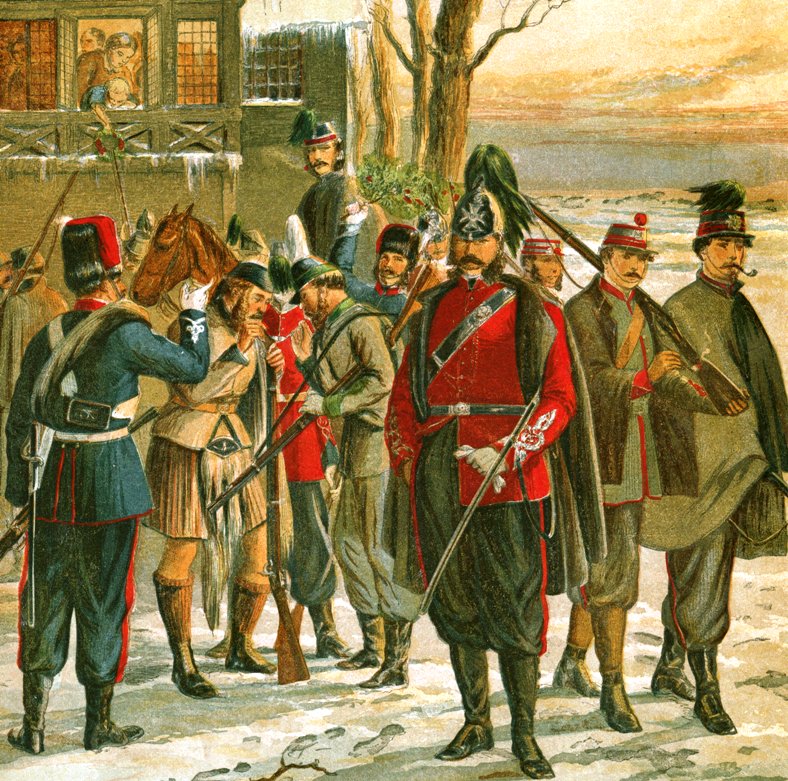
British Militia returning from Christmas Drill, 1865
Similar traditions
were practiced as well in the cavalry.
In his autobiography, From Private to
Field Marshall, William Robertson recalled his first Christmas in a British cavalry regiment:
On Christmas Day 1877, I was
detailed for my first military 'duty' that of stable-guard or looking after the
troop-horses out of stable-hours.
The custom was to employ the most recently joined
recruits on this particular day, so that the old soldiers might be free to make the most
of their Christmas dinner, which was provided by the officer commanding the troop, and
included a variety of eatables never seen on any other day, as well as a liberal supply of
beer.
The casks containing the beer were brought some time before to the
barrack-room where the dinner was to be held, and were placed under charge of a man who
could be depended upon to see that they were not broached before the appointed hour.
Had this happened - as it sometimes did - rather awkward incidents might have
occurred when the officers visited the room just previous to the dinner to wish the men a
merry Christmas and to receive similar wishes in return.
If any individual did, by
some means or other contrive to start his festivities too early, efforts were made to keep
him in the background until the officers had left.
It wsa the practice to see that
all members of the troop who were absent on duty should be specially well cared for, and
in my case the dinner brought to the stable consisted of a huge plateful of miscellaneous
food - beef, goose, ham, vegetables, plum-pudding, blankmange - plus a basin of beer, a
packet of tobacco, and a new clay pipe!"
In addition to a fine meal,
singing, dancing and elaborate decorations, some soldiers of regiments applied themselves
in the acting profession, presenting amateurs plays like "The Mistletoe Bough"
and "Visions of Christmas" (a version of Charles Dickens' A Christmas Carol).
Decorating the
Barracks for Christmas Day in the 1890s

Royal Welsh Fusiliers Men's Barracks Decorated for
Christmas, 1899
First the barracks room had to
be whitewashed and the floors were scrubbed and rescrubbed until no spots
remained. Coal fire grates, coal box and ironwork were polished with
blacking. Which soldier landed this tedious duty? "Let a
youngster give his opinions too freely, or a drunken comrade disturb the
occupants of his room on return from town, and the following day he is to be
seen.... with brush in hand, preparing the room for Christmas Day. "
After the room was clean and
painted, the decorating began. In the above image, the beds were arranged in
the form of couches, which were covered with Government blankets to increase
their beauty and comfort. Decorations of
"Chinese lanterns,
combined with every kind of fantastic design in coloured papers,
adorn the ceiling, and holly and evergreens are profusely used.
On the walls loyal sentiments are usually to be read, accompanied by
a portrait of one or other of the Royal Family. The
fire-places and walls were further treated, and add to the general
effect... High up on the wall is a portrait of Her Majesty.
Under this is the badge of the regiment, and the honours of the
regiment are inscribed on either side of a scroll which calls down
blessings upon the head of the commanding officer and his wife.
Below this the Government blankets are made to do duty, but not as
intended by Government regulations. On other parts of the
walls good wishes are to be read in abundance, and these are extendd
to officers and non-commissioned officers alike. Above the
fire-place in another is an excellent respresentation in cotton wool
of the regimental goat which marches at the head of the regiment and
of which the Welsh Fusiliers are justly so proud."
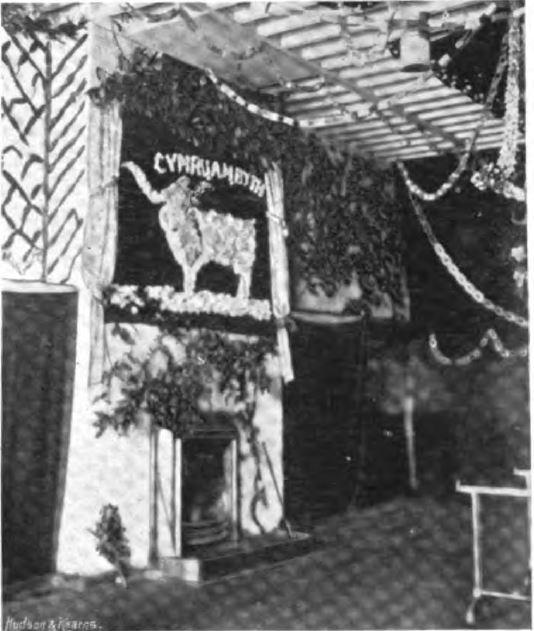
Regimental Goat Christmas decoration for the Royal Welsh Fusiliers, 1899
The gunners for the 44th battery
of the Royal Artillery also placed their iron bedsteads together to make
couches like the Royal Welsh Fusiliers. As shown in the image
below, almost all the soldiers dining are single. The married soldiers were
on Christmas furlough. The absence of married soldiers from the
barracks allowed the single soldiers the room to section off their barracks
accommodations to allow for a decorated space.
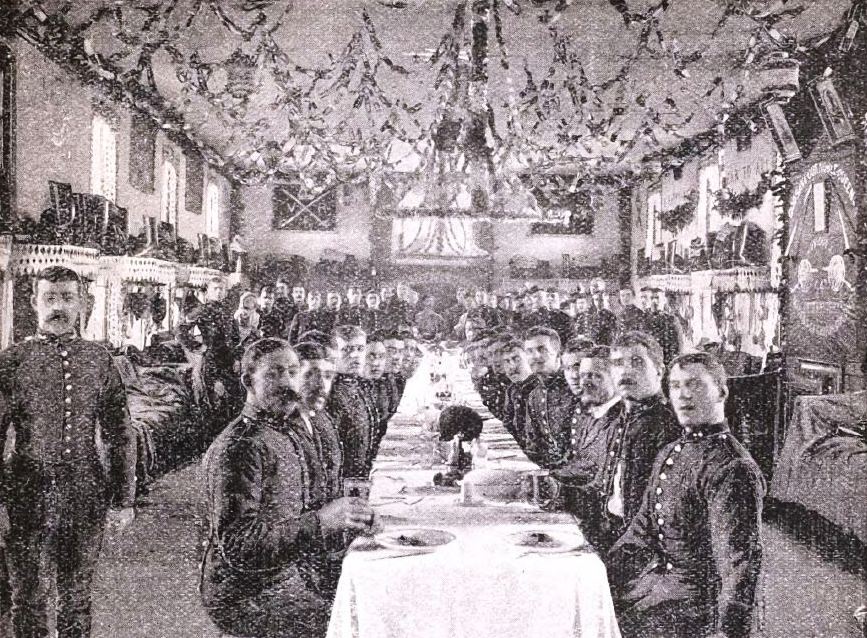
44th Battery, Royal Artillery sitting down to Christmas
dinner, 1896.
The West Yorkshire Regiment in 1896 added a little more humour to their
barracks display. The picture below shows "extra pictures, in fancy frames,
adorn the walls; and the artist of the Company is employed to emblazon the
regimental honours and good wishes to his officers in every convenient
place. Designs are made from bayonets, swords, rifles, and other
warlike implements. Japanese lanterns are hung profusely about the
room, and holly and evergreens everywhere reign supreme. Trophies won
in tug-of-war competitions or musketry add to the good effect." Mannequin
sentries of a constable and a German soldier stand guard over the kegs of
alcohol barring the comical brands of "Dead Dog", "Dynamite" and "Old Sox".
Woolen blankets have been added as cushions to the trestle benches to add a
plusher feel to the dining experience.
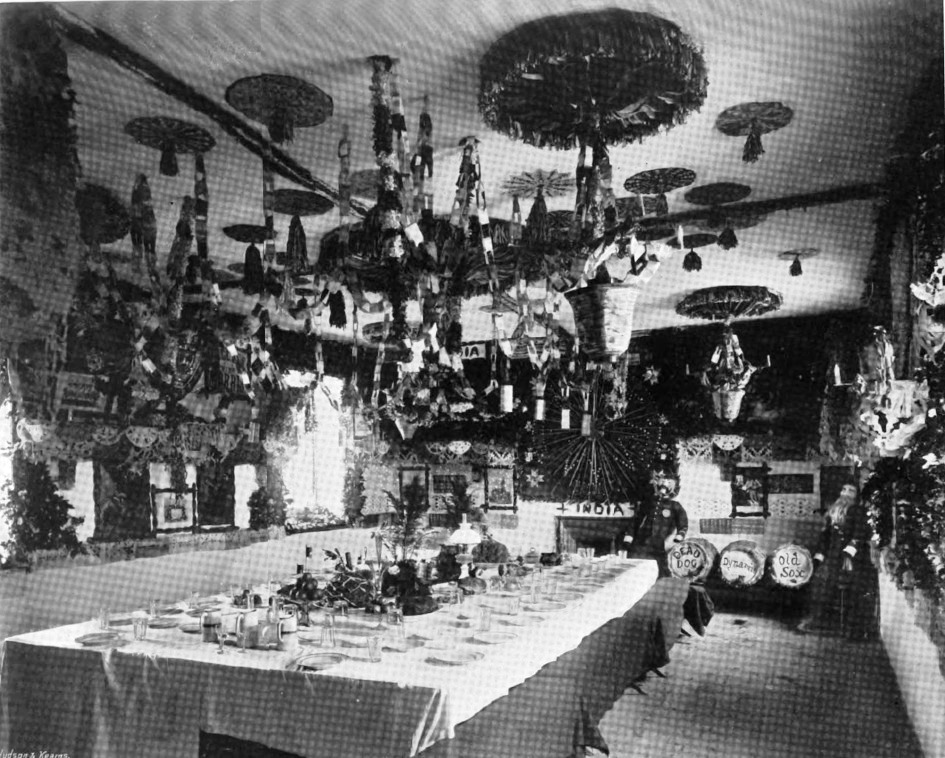
West Yorkshire Regiment Barracks at Christmas, 1896.
Commanding officers of many
garrisons and regiments provided cash prizes for the best decorated room.
These prizes were not insignificant amounts. At Aldershot in 1880 the Major
General commanding offered the princely sum of
£22 sterling to the
winning barracks room. Artists in each company were put to work.
Some had limited talent would others were exceptional.
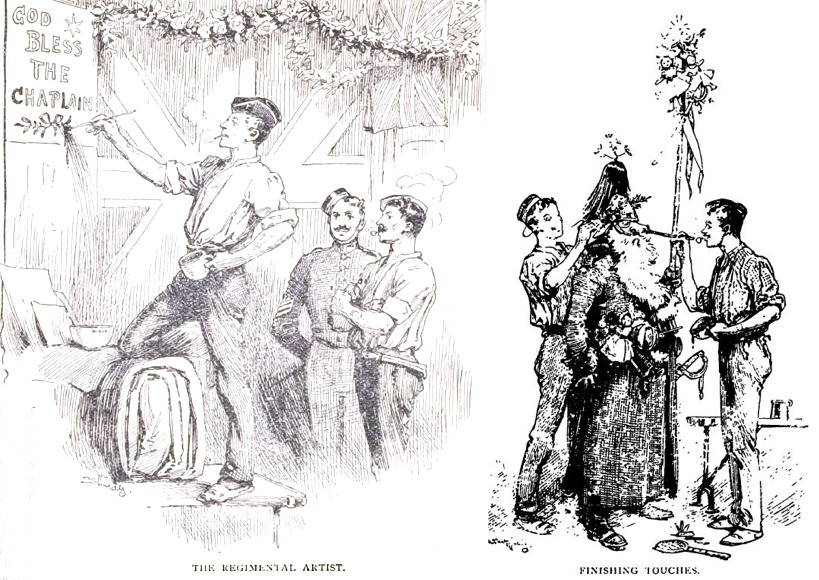
Left: Surrounded by flags and garland an artist props
himself up on an bed roll and iron bedstands and paints sign.
Right: West Yorkshire artist completes the comical sentry's face who stands
guard at the kegs.
The skill of the artist in the
4th Company, Royal Engineers in 1896 was particularly eye-catching.
Sapper Crespinel painted two works for the barracks christmas decoration.
One was of a lancer charging into battle, while other was a light-hearted
piece of the unit's musicians practicing for "the Yule-tide serenade" while
a frustrated soldier seems to tell them to keep the noise down.
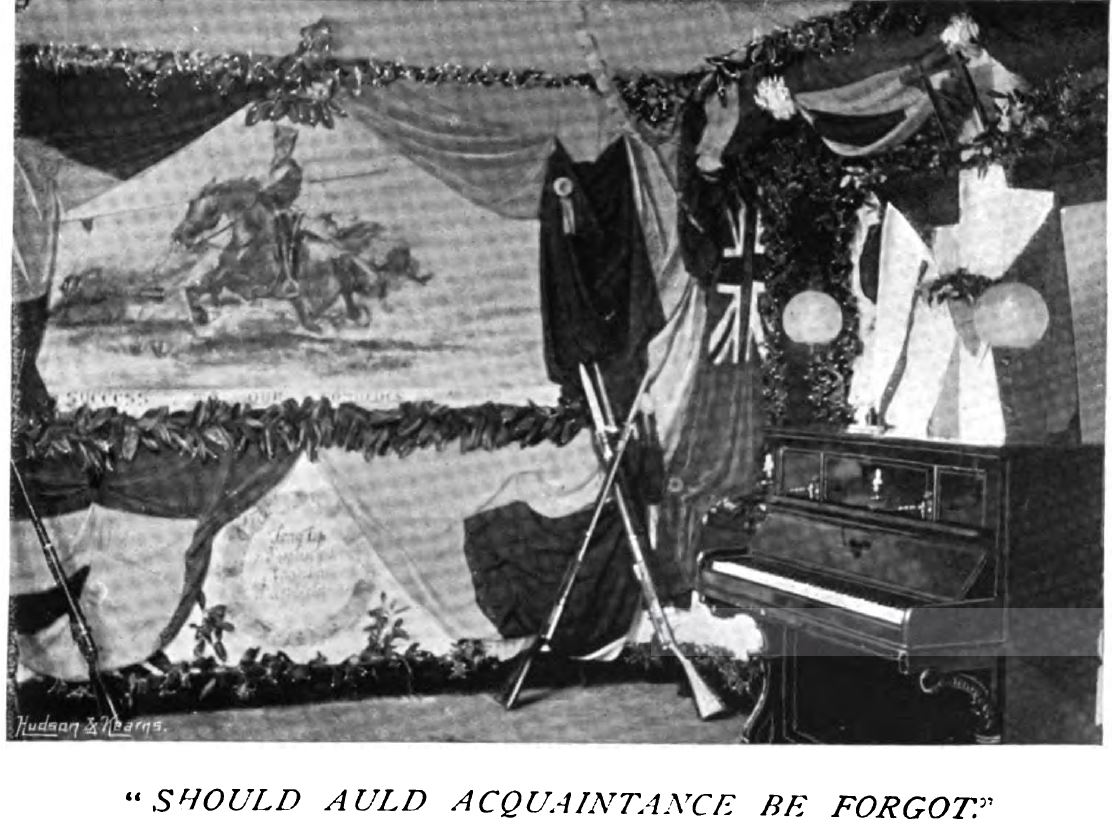
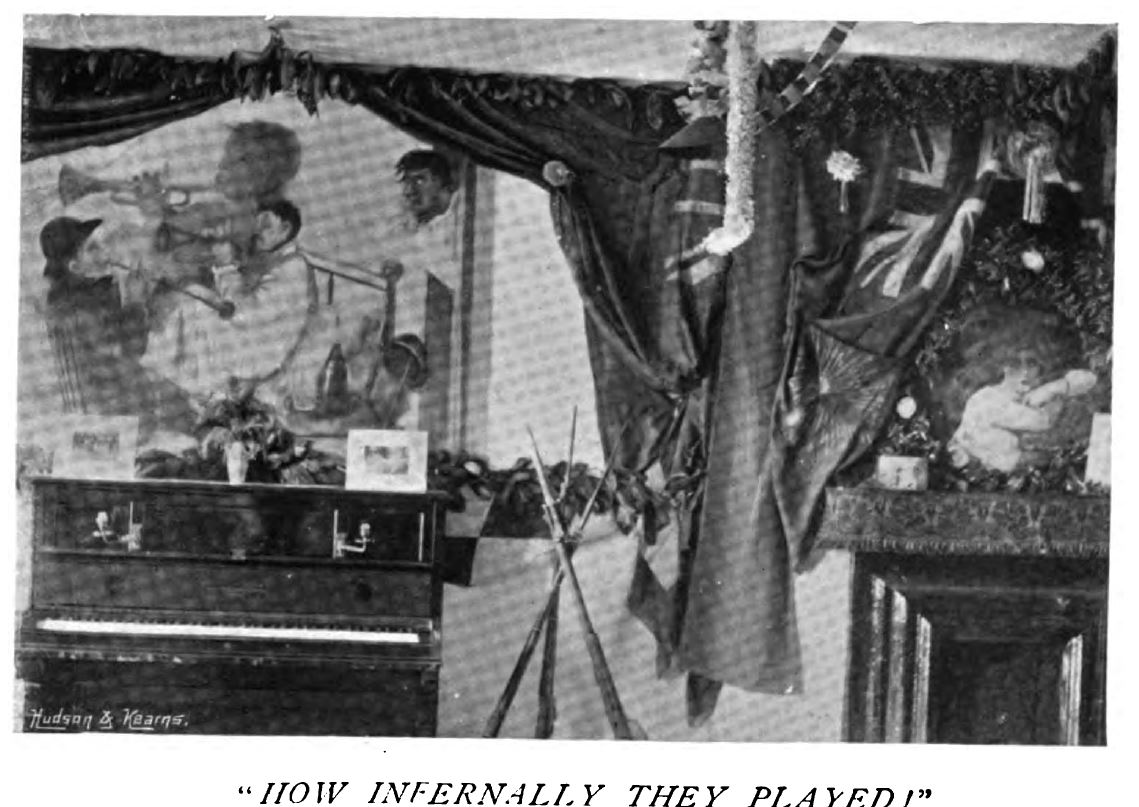
When the decorations were
complete, a Christmas dinner was prepared and guests were received to enjoy
the festive atmosphere. When sitting down to dinner, one soldier's
barracks offered a bizarre, and today unacceptable, spectacle.
The previous evening a soldier had returned to barracks "in his cups" and
had set fire to one or two of the paper ornaments. His comrades acted
quickly to put the fire and a barrack-room court martial of his peers was
held to judge and punish the disruptive private: "the sentence was a source
of amusement to all but the culprit. He was condemned to blacken his face
before the Christmas dinner and wait upon his comrades during the feast.
The colonel was naturally amused, when he visited the dinners, to see the
'coloured gentleman,' but it was not until he was afterwards informed of the
circumstances that he enjoyed a hearty laugh."
To pay for the feast, the men in
the 1890s voluntarily forfeit part of their pay for a period of a month.
Prior to this, funds came from the profits of the regimental canteen.
The officers liberally donate funds to the soldier's banquet "so that there
is no lack of Christmas fare, nor are the decorations forgotten." The
end result is "the consumption of an abnormal amount of food and drink, with
the attendant evils of indigestion, dyspepsia, and other physical
derangements." In this regard, not much has changed since 1899.
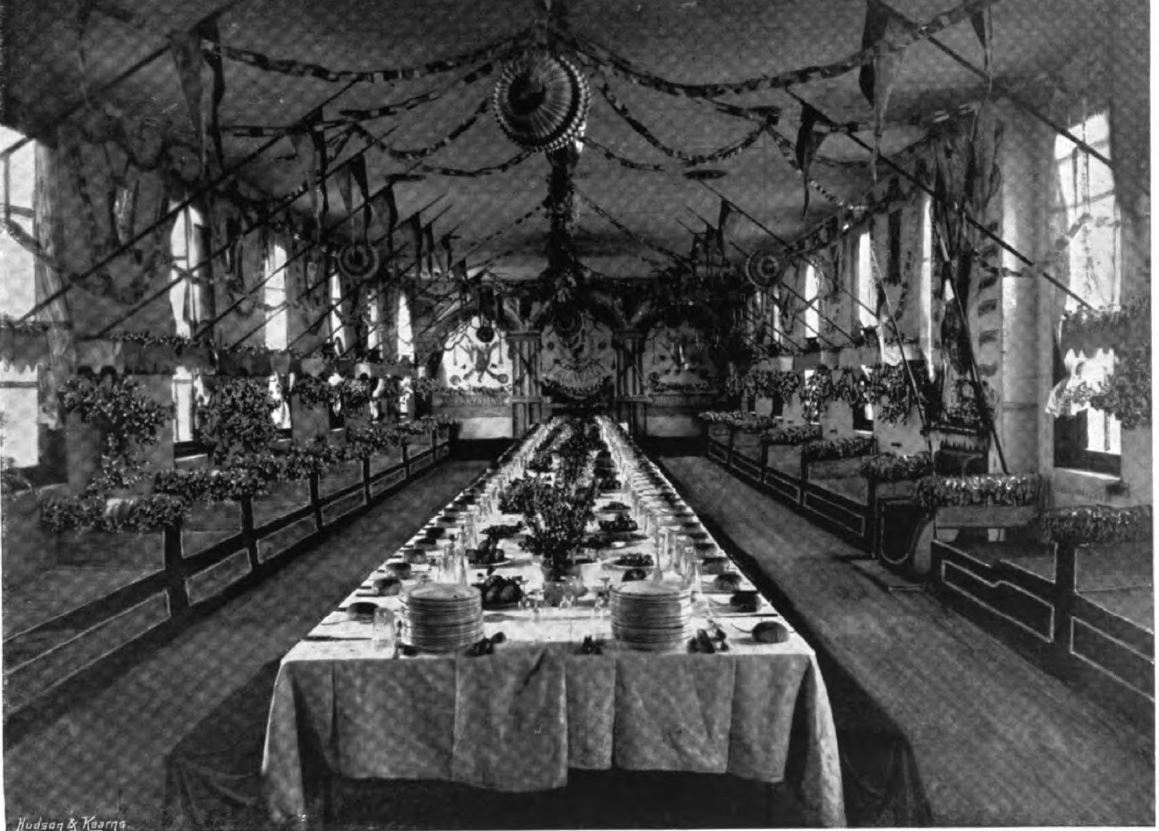
Not to be outdone, the 16th Lancers take decorating to a
whole new level in 1896. Note how they converted their bedsteads into
elegant couches. This was presumably done by combining their horse
blankets with the Government blankets. Blankets are also added to
cushion their seats. Surely a prize-winning effort.
--------------------
------- "Christmas with the
Sub-Marine Miners" The Navy and Army Illustrated December 25, 1896.
------- "Tommy Atkins's Christmas Decorations" The Navy and Army
Illustrated February 4, 1899.
Thomas Faughnan, Stirring Incidents in the Life of a British Soldier (Picton,
1888).
E. J. Hardy, "Christmas in the Army" Cassell's Magazine (London,
1899)
William Robert Robertson, From Private to
Field Marshall (London, 1921).
 |
Author
Robert Henderson enjoys unearthing and
telling stories of military valour, heritage, and sacrifice
from across the globe. Lest we forget.
|


Swords for decorating?
MORE FREE ARTICLES
like this one can be found here:
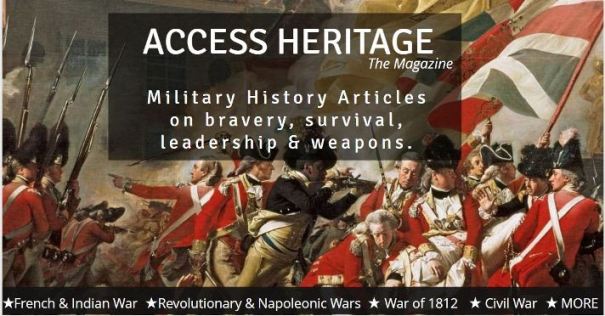
|

